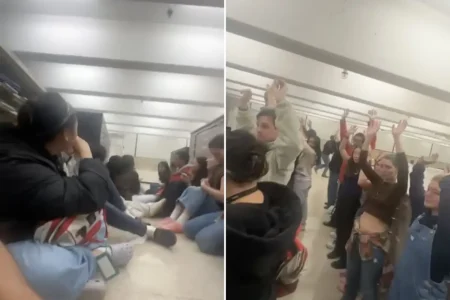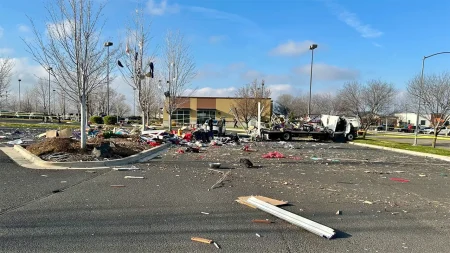The Fall from Grace: How Multiple Scandals Undermined a Royal Legacy
A Royal Reputation in Ruins: The Untold Story Behind the Duke’s Downfall
In the storied halls of Buckingham Palace, where portraits of monarchs past gaze upon the weight of history, a modern tale of disgrace has unfolded with startling velocity. Last Friday marked a significant milestone in what many royal observers describe as one of the most precipitous falls from grace in recent royal history, as the prince formally stepped back from using his Duke of York title. This latest development, however, represents merely the final chapter in a lengthy narrative of controversy that has shadowed the once-respected royal for years. What began as whispered concerns about judgment and associations gradually escalated into headline-dominating scandals that ultimately rendered his position untenable within the institution he was born to serve.
The prince’s troubles did not materialize overnight but rather accumulated over decades in the public eye. As the second son of the monarch, he once enjoyed tremendous popularity, particularly during his military service as a helicopter pilot during the Falklands conflict. Royal commentator Helena Worthington notes, “There was a time when he was genuinely beloved by the British public—dashing, dedicated to service, and seemingly committed to representing the Crown with dignity.” This early promise makes his subsequent descent all the more remarkable to those who have followed royal affairs closely. The initial cracks in his public image appeared through questionable business relationships and diplomatic missteps that raised eyebrows in government circles, though these were often downplayed as minor indiscretions rather than harbingers of the crisis to come.
The Turning Point: When Private Associations Became Public Liability
Perhaps no single factor contributed more significantly to the prince’s downfall than his association with a convicted offender, a relationship that continued even after his associate’s first conviction. This friendship, which the prince defended long after others had distanced themselves, demonstrated a profound lack of judgment that increasingly concerned palace officials. When allegations eventually emerged connecting the prince himself to potential impropriety, the situation rapidly deteriorated from embarrassment to crisis. Former royal press secretary Charles Harrington explains, “There’s a fundamental expectation that members of the royal family will exercise impeccable judgment in their personal associations. When that trust is broken, particularly in such a sensitive area, the damage can be irreparable.” The prince’s decision to participate in a television interview intended to address these allegations proved catastrophically ill-advised, with his performance widely criticized as tone-deaf and lacking empathy for victims. Media analysts have since identified this interview as the moment when public opinion shifted decisively against him, with support plummeting across all demographic groups.
The financial repercussions of these scandals created another dimension to the prince’s troubles. Once a UK trade envoy who traveled globally representing British business interests, his unofficial “Ambassador for Business” role became increasingly untenable as corporations and charities distanced themselves from his patronage. Major organizations that had long featured the royal’s involvement prominently in their marketing materials quietly removed his name from their websites. The subsequent legal battles drained resources and necessitated controversial financial arrangements, including the reported sale of a Swiss chalet and loans from family members, further tarnishing his image. Economic journalist Victoria Pemberton observes, “When high-profile charities determine that severing ties with a royal patron improves their reputation, you’re witnessing an extraordinary reversal of what royal patronage traditionally represents.” This financial isolation reflected a broader pattern of institutional abandonment, as entities once eager for royal association calculated that the prince had become a liability rather than an asset.
The Royal Response: Institutional Self-Preservation in Action
The royal family’s handling of the escalating crisis reveals much about the monarchy’s approach to institutional self-preservation in the modern era. Initial responses were measured and limited, with palace statements emphasizing the prince’s technical status while gradually reducing his public appearances. However, as allegations intensified and public sentiment soured, more decisive action became necessary. In January 2022, the prince’s military affiliations and royal patronages were returned to the monarch, a move widely interpreted as an effort to create distance between the institution and the individual. Constitutional historian Dr. Andrew Blackwell characterizes these incremental steps as “classic crown crisis management—separating the individual from the institution while maintaining the appearance of familial support.” This delicate balancing act became increasingly difficult to maintain as legal proceedings advanced and media scrutiny intensified, ultimately culminating in Friday’s announcement regarding the duke’s title. The careful choreography of these announcements—typically released during other major news events—suggests a sophisticated understanding of media cycles and public attention spans.
Public Perception and Legacy: Can Royal Rehabilitation Occur?
As the prince recedes from public life, questions inevitably arise about the possibility of rehabilitation and the long-term impact on both his personal legacy and the monarchy itself. Public polling indicates a profound shift in perception, with support numbers that once routinely exceeded 60 percent falling to single digits in some recent surveys. More concerning for palace officials is evidence suggesting this individual scandal has contributed to declining support for the monarchy among younger Britons, who increasingly question the relevance and value of the institution in contemporary society. Communications expert Jasmine Reynolds notes, “The royal family has survived scandals before, but in the social media age, the damage spreads faster and penetrates deeper than ever before.” Efforts to rehabilitate the prince’s image appear unlikely in the near term, with focus instead shifting to containing damage to the broader institution. Royal historians draw parallels to previous crises, though many argue this situation presents unique challenges given the nature of the allegations and the changed media landscape in which they’ve unfolded.
The story of the prince’s fall from grace transcends mere royal gossip, offering insights into institutional crisis management, public morality, and the evolving relationship between the monarchy and its subjects in the 21st century. As he withdraws from using his ducal title—a symbolic step that underscores his diminished position—the broader implications continue to reverberate through British society. For a family whose power rests largely on tradition, reputation, and public goodwill, the mishandling of such sensitive matters raises fundamental questions about judgment and governance. While the monarchy has weathered numerous storms throughout its thousand-year history, each crisis forces adaptation and reflection. As royal biographer Margaret Sinclair observes, “The institution survives by evolving with the times, by recognizing when public sentiment has shifted decisively. The handling of this situation may ultimately be viewed as a painful but necessary example of that evolutionary process.” Whether this particular royal can ever rehabilitate his personal standing remains doubtful, but the institution’s response to his scandals will likely be studied by future historians as a defining moment in the monarchy’s modern history—a case study in how ancient institutions navigate contemporary moral reckonings.







